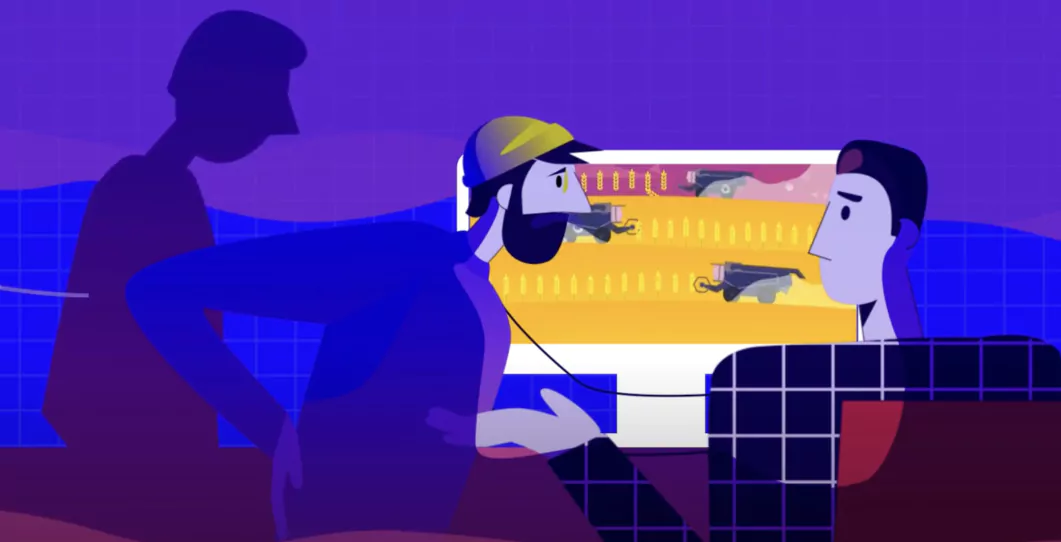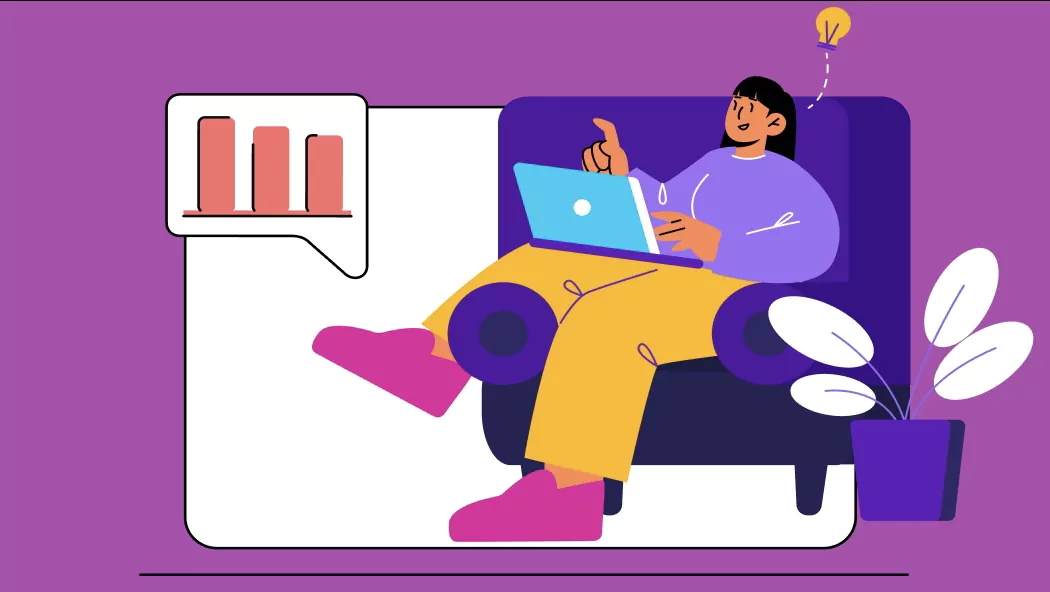Are you looking for a clear definition of an “explainer video”? You’ve come to the right place! In this article, we dive deep into the topic and explore exactly what an explainer video is and why it has become so important in today’s digital world.
What Exactly is an Explainer Video?
An explainer video, often referred to as an “explainer” or “explainer animation”, is a short, animated video designed to present complex content in a simple and understandable way. The goal of an explainer video is to convey key messages about a product or service to the viewer in a very short amount of time.
Explainer videos combine visual and auditory elements to maximize the viewer’s attention span and increase engagement. By using animation, illustrations, and storytelling, explainer videos can make complex topics more engaging and ensure that the information is both informative and entertaining.
The tone and style of an explainer video can vary depending on the target audience and product. Whether it’s a B2B service or a consumer product, the main goal is always to present the subject matter in a way that is easily understood by the target audience.
What Are the Advantages of an Explainer Video Compared to an Illustrated Guide?
In today’s fast-paced digital world, user attention spans are often limited. This is where explainer videos come in, offering several advantages over traditional illustrated guides:
- Visual and Auditory Engagement: An explainer video combines visual elements like animations and illustrations with clear narration. This engages the viewer on multiple levels, increasing the chances that key messages will be understood and remembered.
- Concise and to the Point: Explainer videos are often short, designed to convey complex content in just a few minutes or even seconds. This appeals to the limited attention spans of most users.
- Emotional Connection: Through storytelling and the right animation, explainer videos can create an emotional connection with the viewer, leading to stronger identification with the product or service.
- Higher Conversion Rates: Studies have shown that explainer videos can help attract more customers. They can significantly increase the conversion rate of a website by providing users with a clear overview of a product or service in a short amount of time.
- Flexibility in Style: Depending on the target audience and product, explainer videos can be created in various styles, from 2D flat animations to realistic 3D animations. This offers great flexibility in presenting the subject matter in an engaging and targeted way.
- Easy Integration: Explainer videos can be easily integrated into various platforms and media, from websites to social media to presentations, increasing their reach and effectiveness.
How Should an Explainer Video Be Structured?
An effective explainer video typically follows a proven structure to ensure that key messages are clearly and effectively conveyed. Here’s an overview of the typical structure of an explainer video:
- Introduction: Start with a brief introduction that presents the problem or topic your product or service solves. This helps capture the viewer’s attention right from the start.
- Problem Statement: Highlight the main problem or need that your offering addresses. This creates an emotional connection and shows the viewer that you understand their challenges.
- Solution: Present your product or service as the solution to the problem. Use animations and illustrations to highlight how it works and its benefits.
- Benefits and Features: List the main benefits and unique features of your offering. This should be short and concise, focusing on what sets your product apart from the competition.
- Call-to-Action (CTA): End with a clear call to action, whether it’s to visit your website, purchase a product, or request more information. An effective CTA can significantly boost conversion rates.
- Tone and Style: Depending on your target audience and product, choose the right style and tone for your explainer video. This can range from humorous to serious, depending on what resonates best with your audience.
- Conclusion: Wrap up the video with a brief summary or final thought. This could also include a repeat of the CTA to reinforce the action you want the viewer to take.
In Which Areas Are Explainer Videos Especially Popular?
Explainer videos have proven to be valuable tools in many industries and areas. Here are some examples where they are particularly popular and effective, and why:
Technology and Software:
- Why: Technical products and software often have complicated features and benefits. Explainer videos can transform these complex topics into easily understandable information, allowing potential customers to quickly grasp the advantages and functionality.
Medical and Healthcare:
- Why: Medical procedures, medications, and healthcare services can be difficult to understand. Explainer videos can educate patients and customers, giving them a better understanding of their health options.
Finance and Insurance:
- Why: Financial products and insurance policies are often filled with jargon. An explainer video can translate these terms into easily understandable information, showing customers how they can benefit from a specific product or service.
Education and E-Learning:
- Why: Explainer videos can break down complex topics into digestible bits of information, making them an ideal tool for the education sector.
E-Commerce and Retail:
- Why: Explainer videos can highlight products, demonstrate their use, and convince potential customers to make a purchase.
Why Are Explainer Videos So Memorable?
Explainer videos have established themselves as one of the most effective means of conveying information. But why does this format stick so well in viewers’ minds? Here are some reasons why explainer videos are so memorable:
- Combination of Audio and Video: By combining visual elements like animations and illustrations with clear narration, explainer videos engage both the viewer’s sight and hearing. This enhances understanding and retention of complex content.
- Short Duration: Most explainer videos are short, designed to convey key messages in just a few minutes. This matches the typical attention span of viewers and keeps them engaged.
- Storytelling: Stories have always been a means of conveying information. Explainer videos use storytelling to place a topic or product in a contextual framework that is appealing and easy for the viewer to understand.
- Targeted Content: Explainer videos are often created for a specific target audience. This ensures that the content, style, and tone of the video are tailored to the needs and preferences of the viewers.
- Emotional Connection: With the right animation and storytelling, explainer videos can evoke emotions, strengthening the connection with the viewer and increasing engagement.
- Clear Structure: A well-structured explainer video guides the viewer through the content step by step, making the information easier to digest and understand.
- Relevance: Explainer videos that address a current problem or need of the viewers are particularly memorable. When the viewer sees how a product or service can improve their life, the video sticks in their mind.
What Types of Explainer Videos Are There?
Explainer videos are versatile tools that can be used in various formats and for different purposes. Here’s a detailed overview of the most common types of video content:
Product Video
Highlights a specific product or service, showcasing its main features, functions, and benefits. Advantage: A well-made product video can significantly increase conversion rates by providing potential customers with a clear overview of the product.
Content Marketing Video
Informative videos designed to provide value to the viewer rather than directly selling. Advantage: They help establish a brand’s credibility and authority in its field, building a long-term relationship with the audience.
Social Media Video
Short, concise, and optimized for quick consumption on platforms like Instagram or TikTok. Advantage: They have viral potential and are ideal for increasing brand awareness among younger audiences.
Corporate Video
Aims to present the philosophy, values, and culture of a company. Advantage: Strengthens brand image and builds trust with potential customers and partners.
Recruitment Video
Designed to appeal to potential employees by providing insight into the company. Advantage: Can attract top talent by highlighting the company culture and the benefits of working there.
Support Video
Offers solutions and answers to frequently asked questions about a product or service. Advantage: Reduces the need for customer support and improves customer satisfaction.
Tutorial Video
Provides step-by-step instructions and in-depth explanations on a specific topic or task. Advantage: Positions the company as an expert in its field and offers real value to the viewer.
How to Best Use an Explainer Video?
Explainer films, sometimes referred to as explainer videos, are an essential tool in today’s digital landscape. They offer a visual transmission of information that can include both real images and 3D elements. These films are synonymous with quality and efficiency in corporate communication. Here are some tips on how to make the most of an explainer film:
- Understanding Your Audience: It’s important to understand your audience’s background and needs. This helps you choose the right film, wording, and content for your video.
- Use of Real Images and 3D Elements: Depending on your product or service, using real images or 3D elements can enhance the clarity and appeal of the video.
- Distinguish from Other Formats: Explainer films should be distinct from other video formats, such as commercials or tutorials. This ensures they are effective for their intended purpose.
- Integrate into Your Website: Place your explainer video prominently on your website. This can increase visitor engagement and interaction.
- Use Clear Concepts: Ensure your explainer film uses clear concepts and connections to effectively convey the message.
- Share on Social Media: Explainer films are ideal for platforms like Facebook and Instagram. They can help attract more customers and increase brand awareness.
- Measure and Adjust: Use analytics tools to measure your video’s performance. This provides valuable insights into how you can improve future films.
Talk to an Expert
In today’s competitive landscape, standing out is essential. Explainer videos are an effective way to achieve this, but only if done right. At ExplainPitch, we have the experience and expertise in video production to ensure that your video not only looks great but also delivers results. Explainer videos sell your products while you’re brushing your teeth. Don’t believe it? Let us show you how it’s done. Speak with our expert now.
Conclusion
The definition of an explainer video goes far beyond simply presenting a product or service in video form. It’s about conveying complex content in a simple, understandable, and engaging way. In today’s digital era, where users’ attention spans are limited, explainer videos offer an effective way to communicate your message clearly and concisely. They are an essential tool for businesses looking to strengthen their brand presence, increase engagement, and improve conversion rates.
Frequently Asked Questions
What differentiates an explainer video from other video formats?
Explainer videos are specifically designed to make complex topics or products understandable in a short amount of time, while other video formats may have different goals, such as entertainment, education, or product presentation.
How long should an ideal explainer video be?
The ideal length for an explainer video is typically between 60 and 90 seconds, as this matches the average viewer’s attention span.
What elements are essential for an effective explainer video?
Key elements include a clearly defined goal, a concise message, high-quality animations or illustrations, professional narration, and a strong call to action.
Can I offer my explainer video in different languages?
Yes, with professional translation and dubbing, explainer videos can be adapted to different languages and cultures to reach a broader audience.




